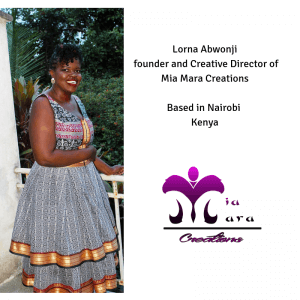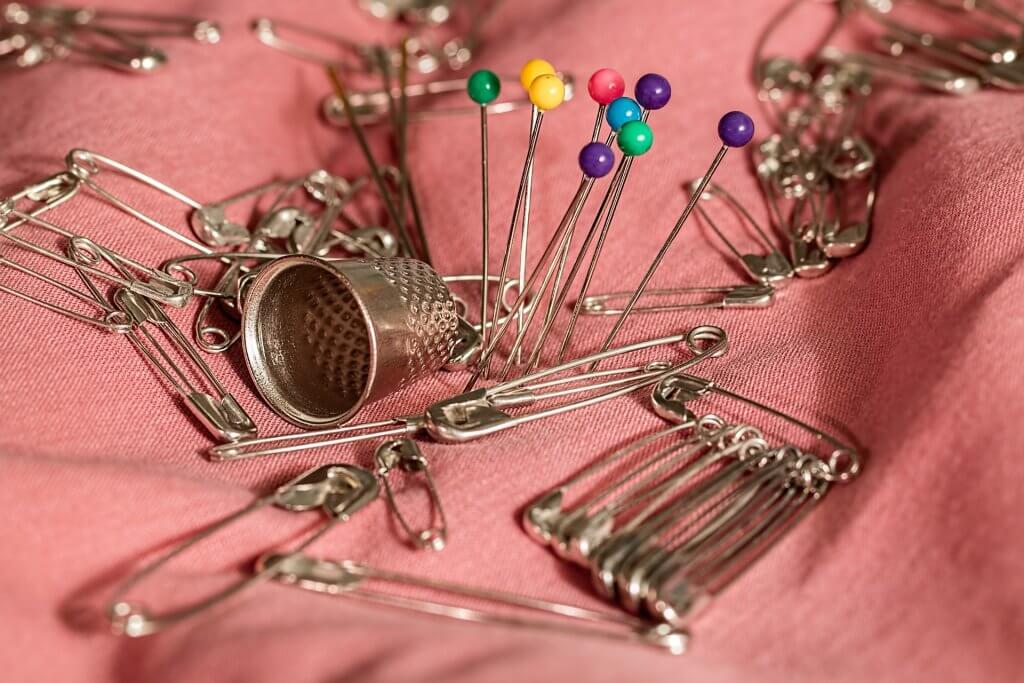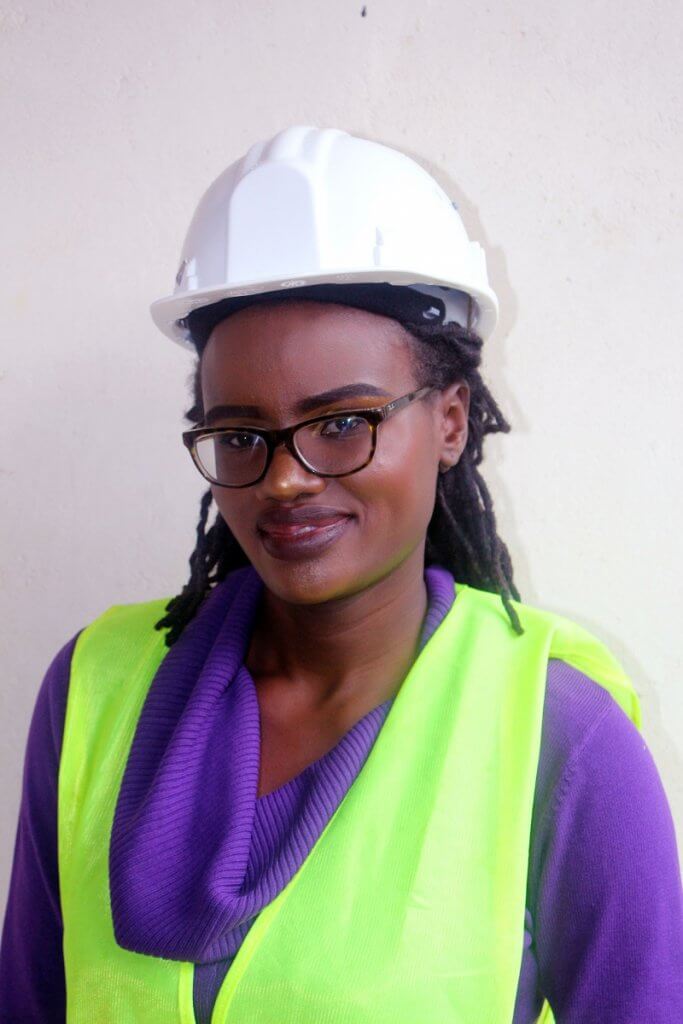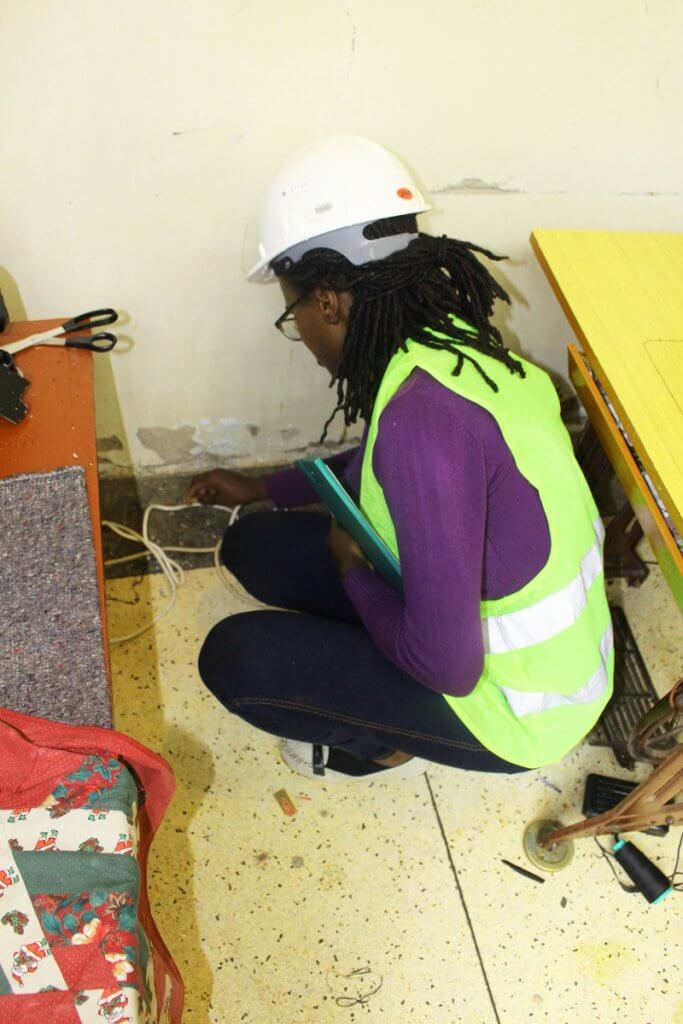As creatives sometimes we are overwhelmed so much by what we want to create that we completely dismiss safety in our workspaces and workshops. That is until there is an accident at work.
We ignore things like the electric cable should not be on the pathway or that we need to have fire extinguishers [that work] close by and that there has to be a well-equipped first aid kit at hand.
With industries like fashion the fact that you need the right chair for the right posture as you will be sitting all day or how poisonous substances such as bleaches and dyes are used and how they can affect our health or the environment
Considering for other creative industries as well how the use of glues, sprays, and solvents are handled. Even the mere fact that a lot of creatives work on their own and barely factor in rest time and may get very fatigued with all they put their bodies through.
How many times have we heard of incidents in big factories and pointed the finger at them for not following safety standards yet we don’t realize that we could fall in the same trap. And yet another factor of safety in creative industries is the safety of the tools, projects, and work of creatives, there are many different companies that offer different tools to keep your work and tools safe-such as Vivint, prices and systems vary enough that you can find the perfect system for your creative work.
There is no way you can grow your business and not think that the risks will not increase. Not just financially but for your own wellbeing as you work as well as those who work for you.
No one definitely wants a scenario where they get sued by an employee because you neglected to have some safety measures for the work they do or that you become unable to work yourself because you did not factor in your rest.
It’s very easy for creatives to fall in this trap simply because the industry can be very unstable with income and so creatives take on all jobs because they can barely predict when the next one will come. Even as this is true, there are aspects of safety that are in the law & are to be followed in the workplace. A lot of people ignore them in the creative industry [mostly because we work very privately in our studios and workshops] but either way are very important to be followed. Many countries have legislation about the working environment as well as the personal wellbeing of employees and it is important to know what they are.
Ruth Kwata
I linked up with a friend Ruth Kwata who is an Environment, Health, and Safety specialist. Ruth wanted to share more information about what she does and how she got into that career. It’s one of those careers you hear about and wonder what it is and how people get into that line of work.
Ruth has always loved nature and outdoor life. She was born in Eldoret town where she grew up with her family. When she wasn’t out and about in nature she was reading books of all kinds from fiction to motivational books. She was also very involved in mentoring young people in her community and doing other various community-based work. Her love for the outdoor grew her passion to learn more about the environment and safety and protecting it.
Ruth has a Masters of Science in Environmental Science degree from Egerton University in Nakuru Kenya. She also pursued the same course for her undergraduate. She has two years’ experience working as an environmental, health and safety specialist. Her most recent job had been with (Safety, Health, and Environment) Strategic SHE limited as a consultant based in Nairobi, Kenya.
Some of her clients have been in the education, retail and service industries. They include organizations such as Tuskys Supermarkets (big chain supermarket in Kenya), AutoXpress Kenya (have branches in major towns in Kenya) and Nova Pioneer Limited (Nairobi) Yara East Africa, Geonet Technologies and Carrefour Kenya among others.
Ruth also does private consultations for individuals and companies according to their needs and specifications. Environment, Health, and Safety cut across the board so she can comfortably tailor her services to a client’s needs.
She has great expertise in undertaking occupational health and safety, fire safety, risk management, and noise assessment audits. She conducts these audits as regulated by OSHA (Occupational, Safety and Health Act), 2007, an act passed by the Kenyan parliament in 2007 to provide for the safety, health, and welfare of workers and all persons lawfully present at workplaces. The minimum requirements to show adherence to this law is a certificate of workplace registration (yellow in color) obtained from the Directorate of Occupational Safety and Health Services (DOSHS) after an Occupational Safety and Health audit has been conducted at the workplace.
Environment, Health, and Safety specialists are certified by DOSHS to undertake such audits at the workplace.
What exactly does an environmental, health and safety specialist do?
In layman’s terms, her job entails being concerned about the environment. The environment here means anything that surrounds us be it in our homes and workplaces. The job entails ensuring that no harm occurs to a person’s health and well-being as a result of changing factors in their environment. Therefore as a specialist, she assists organizations to comply with safety legislation with the aim of preventing and eliminating injury and illness to employees. She inspects workplaces and provides recommendations that can be implemented to minimize or eliminate hazards.
In Kenya since the workforce is becoming more and more aware of their rights to a safe and conducive working environment, there has been a demand for people like Ruth [environmental, health and safety specialists]. Additionally, the government has become more intentional about workplace safety and with regard, it is implementing new environmental regulations that demand the regular inspection and remediation of hazards in the workplace.
Industries have also created opportunities for environmental health and safety specialists. There is a lot of innovations in different areas of the workplace such as energy, manufacturing, agriculture, banking etc. that provide more opportunities for the profession.
So how do people go about finding environmental health and safety specialists?
The Kenyan public can find certified Environmental, Health, and Safety specialists by checking with the National Environment Management Authority (NEMA), Directorate of Safety and Health Services (DOSHS) websites, also on social media especially LinkedIn and through referrals.
Some of the misconceptions about environmental, health and safety.
Ruth says the biggest misconception is that the environment is just about collecting garbage and planting trees. Also, that specialists will arrest those who fail to implement laws governing environment, health, and safety. They do not arrest or report to relevant authorities.
What they actually do is help organizations implement relevant laws by advising on the measures to put in place.
The environment is more than just planting trees and collecting garbage. It is being aware of how our actions affect the environment and changing these attitudes so that the environment continues to thrive as it supports us. This requires a lot of awareness campaigns.
Creatives & Safety
Safety is first and foremost a personal responsibility. So we should abide by the very basic safety rules that have been recommended. Some of the safety rules we can follow in our private spaces include cleaning up spills immediately they occur, ensuring our spaces are well organized with traffic paths kept clear of any obstacles, only use electrical equipment that is safe and in good working order, switching off electrical appliances, not in use, ensuring proper lighting and ventilation in our homes, keeping sharp objects and harmful objects out of harms way. Most importantly we should be aware of the safety risks especially with Liquefied Petroleum Gas and how to minimize them.
Creatives play a huge role in the development of Kenya’s economy and that is why the government is continually working to provide a conducive environment in terms of laws and regulations. Considering how much inspiration creatives get from their environment, it is of utmost importance that the creative ensure they can get maximum benefit from the environment by ensuring health and safety.
Health and safety in the environment of a Creative can range from the level and source of noise, the kind of machine and equipment used, the lighting and air quality, amount of exposure to chemical components, space of operations, access to emergency exits and first aid kits among others.
It is advisable for a creative to seek the services of an EHS from time to time (at least on a quarterly basis). Mostly to advice and offer basic training on health and safety for their staff so as to create awareness with the aim to prevent and reduce accidents, emergencies, and health issues at work, along with any environmental damage that could result from work practices.
Ruth is a firm believer in the English proverb that says, prevention is better than cure.
Contact information
To reach Ruth Kwata for a consultation
You can email her at ruthkwatashikuku@hotmail.com and also via her
LinkedIn profile – Linkedin.com/in/ruth-kwata-99525887

She is the Project manager at Dress Up Kenya. RAFDA 2008 Finalist & FA254 Finalist 2014.
Lorna is a 2016 YALI Mandela Washington Fellow.








